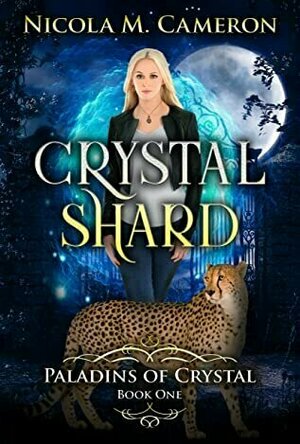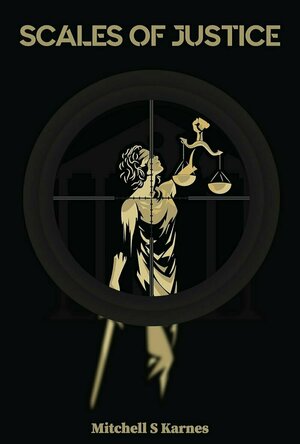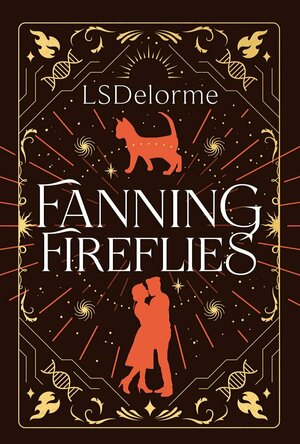
Thicker Than Water
Book
Outcast operative in the Supernatural Investigation & Crime Bureau (SICB) Callen Blackheath finds...
MM Paranormal Romance Urban Fantasy

The Burden of Innocence (The Infantino Files #2)
Book
Innocence is pain—when you're locked in a cage. Private investigators Ray Infantino and Tania...
Mystery Crime Noir

Crystal Shard (Paladins of Crystal. #1)
Book
A week ago I was working at Sav-R-Mart. Now I’m helping five gorgeous shifters track down a stolen...
Reverse Harem Paranormal Romance
David McK (3649 KP) rated GoldenEye (1995) in Movies
Feb 22, 2021 (Updated Aug 5, 2023)
Back when the Bond films were actually good.
I realise that might be an unpopular opinion, but I actually preferred Brosnan over Craig as Bind, and (much) preferred all the clichés of the genre - guns, gadgets, secret bases and all - over the overly dour and serious Daniel Craig outings.
Anyway, this is also the one with Famke Janssen and her, shall we say, unusual methods of dispatching her foes, and also with Sean Bean (bonus points straight away, there, in my book) as Bond's once friend Alec Trevelyan.
Maybe slightly dated now - look at all those 'top of the range' computers. Complete with CRT screens, modems and all... - but that was always going to be the case for a Bond film.
Lyndsey Gollogly (2893 KP) rated Revenge in Books
Nov 30, 2023
Book
Revenge
By Martina Cole
⭐️⭐️⭐️
He thought he was invincible. He was wrong.
REVENGE by the 'undisputed queen of crime writing' (Guardian) and Sunday Times No.1 bestseller Martina Cole is an unflinching novel that exposes a world that many would rather ignore...
Michael Flynn is untouchable. He's the boss of a dangerous empire, the biggest the criminal world has ever seen. No one crosses him, no one gets in his way, and everyone does what he says - including the law.
But you don't get to where Michael is without making enemies. Someone is out for revenge. And it's best served when least expected.
I liked this but it wasn’t my favourite of hers I found some of it too similar to some of her other stories and yes I know she has a type and way of writing but this wasn’t as good as those she’s written before. Although it was brutal and possibly more so than others.

Fool's Gold (Two Tribes #1)
Book
Liam Moseley has been living a lie ever since he joined Manchester’s notorious crime boss Jonny...
Contemporary MM Romance Forbidden Love Opposites Attract Gangster

The Man In Black
Book
Naive dreamer Fenimore James runs from home and goes west to become a famous outlaw––Simon Shaw....

Scales of Justice
Book
Top assassin Graham Turner walks a delicate line as he tries to secretly solve the mystery of his...
Mystery Suspense Thriller

Fanning Fireflies (The Limerent Series #3)
Book
There is something rotting in Harrisville. It's 1944 and Veronica works so she can afford to eat....
Historical Supernatural Romance
Purple Phoenix Games (2266 KP) rated Lair in Tabletop Games
Feb 13, 2020
Lair is a worker placement game in which players are racing to complete the construction of a secret lair for their evil boss, Mr. White. Played over a series of rounds, players select turn order and command henchmen to construct new rooms, collect supplies, interfere with your competitors’ plans, or dig deeper into the volcano in which this lair is housed. The first player to reach the core of the volcano, thus completing the lair, is the winner!
Disclaimer: We were provided a copy of Lair for the purposes of this review. I do not intend to rehash the entire rulebook, but rather provide an overview of the rules and comment on the gameplay. For a more in-depth look at the rules, find the game at your FLGS or directly from the publisher! -L
To setup, place the foundation cards at the top of the table and then place 4 elevator cards in a single line underneath the center-most foundation card, and put the Core card at the bottom of the line. Flip the top elevator card, give each player their components (Player Card, Boss token, and 2 Henchmen tokens), create a room card pool, and you are ready to go! Choose the first player as described in the rule book. To start each round, players will choose turn order. All spaces in the turn order track offer different resources/rewards (collect Work Tokens, claim room cards, etc), so going first each turn might not necessarily be best for your strategy. Once turn order is established, players take turns moving 1 worker (either a Henchmen or Boss), and possibly performing the action of the room card to which they moved. Each move costs 1 Work Token, and is paid to the “bank.” In order to perform a room’s action, you must play your Boss token to that card, and there must be a Henchmen token already in the room. Here’s the catch – if the Henchmen token belongs to an opponent, you pay THEM 1 Work Token (instead of the bank) for having moved into a room that they have claimed. Do you want to use a room action enough to justify giving an opponent another Work Token to be used against you? Or can you rework your strategy to avoid using that action? Play continues in the round as long as players have Work Tokens to spend. Once you run out of actions, or choose to stop, you ‘retire’ and pass until the next round begins. There is an incentive to retiring early, though – the first player to retire in a round is the first player to choose their turn order in the next round. Play continues until one player has reached the final spot on the elevator track, the Core. The game immediately ends, and that player is the victor!
So how does Lair play? In my opinion, it’s a great little game. There is so much strategy involved for such a small game, and that is really what takes it to the next level for me. Let’s start with selecting turn order. In most games, this means vying for first dibs in the next round. In this game, however, each different turn order slot provides different resources/rewards. Depending on your strategy, you may really need that 3rd slot, or even the last one! So going first is not necessarily always the best thing in this game. You have to balance the risk of going later in the round with the reward of your chosen resources. The next strategic part of this game has to do with Henchmen placement. As I stated earlier, in order to use a room’s action, you must move your Boss to that card, and there must already be a Henchmen present. If the Henchmen belongs to an opponent, you pay them instead of the bank. This is vital because Work Tokens are what allow you to take turns, so paying an opponent means giving them a chance for another turn next round. Is it worth rewarding an opponent for use of a room action? On the flip side – can you strategically place your Henchmen to ensure that opponents have to pay you to complete their goals? The Boss may be in charge, but the Henchmen are the underdogs in this game for sure.
Components. The components are pretty good quality in this game. The cards are nice and thick, the art is thematic, and the wooden and cardboard tokens are sturdy. No complaints there. The only qualm that we had with Lair has to do with iconography. Every possible action has a corresponding symbol, and that is what is shown on the card. The downside is that there are so many symbols and icons, so there is a bit of a learning curve when it comes to playing Lair for the first time. To alleviate some of the confusion, the game comes with some nice reference cards, and the symbols do get easier to recognize with more plays. But just be warned: at first you may be a little confused with all of the symbology.
As you can see by our ratings, we kind of had mixed feelings about this one. For a game that seems so small and light, it actually has a lot of bulk to it. Between strategic choices and learning symbology, this might not be a game we can just pull out for a quick filler, but I think that it’s good enough to stand on its own. Sometimes physically smaller games can be overlooked, but don’t let the size fool you – Lair packs a punch. Purple Phoenix Games gives Lair a nefarious 12 / 18.


